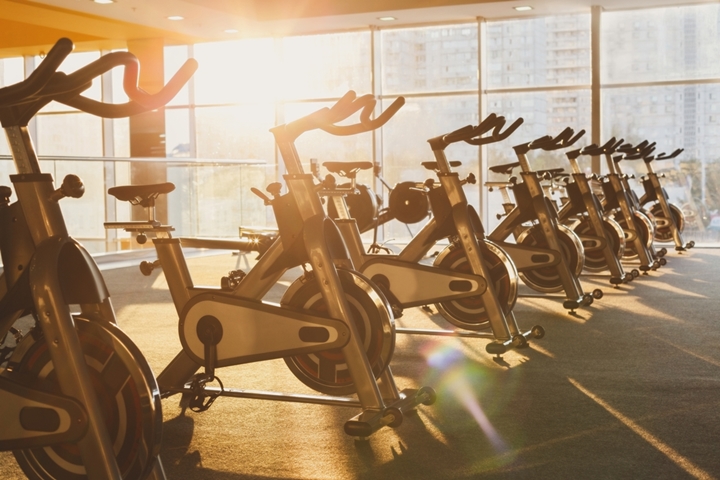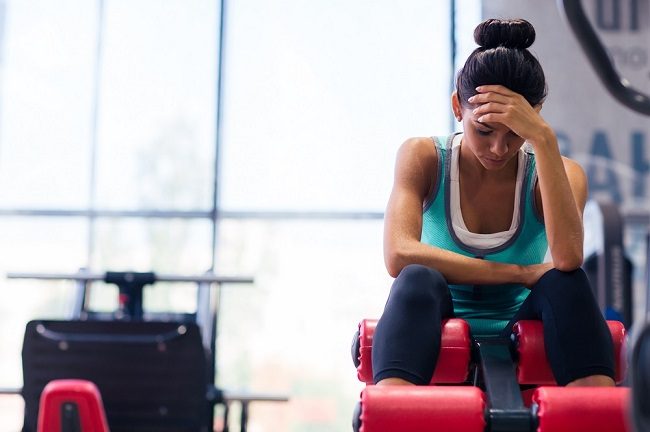Yoga is perhaps the oldest and today the most popular form of fitness across not just India but the world. From Bollywood stars like Shilpa Shetty to international celebrities like David Beckham and Justin Trudeau, the benefits of Yoga have been accepted across the world. So much so that many westerners spend sizeable sums to come and learn the mystic art of Yoga in India. So what is it about this ancient practice that continues to attract followers across the globe? Is Yoga only about fitness? In this article, we’ll tell you everything you ever wanted to know about Yoga.
What Is Yoga?
Like everything ancient, the history of Yoga too, is debated among scholars. First mentioned in the Rigveda, which was compiled over 8 to 10 thousand years ago, the word Yoga has its roots in the Sanskrit word ‘Yuj’ which means ‘to join together’. Many scholars like to point out the meaning of yoga is ‘the union of mind, body and soul’.
|
Did You Know? “Yogas Chitta Vritti Nirodha” A very famous line taken from the Samadhi Pada or Patanjali Yogasutra, the famous line “Yogas Chitta vritti nirodha” refers to resting one’s mind in peace and tranquillity so as to experience the ultimate reality of life and move towards the eventual goal of self-realisation. |
Origin & Brief History of Yoga
Yoga also finds mention across many ancient texts spanning thousands of years including in Sreemad Bhagavad Geeta where it has been described variously as “equanimity” and “separation from contact with suffering”.
“Yoga is the journey of the self, through the self, to the self” – The Bhagavad Gita
Many believe that there is no Yoga without Lord Shiva. In fact, the most common representation of Lord Shiva is in his meditating pose. Also known as Adi Yogi or the first yogi, every aspect of Lord Shiva has a specific representation in the yogic culture (1).
The First Yogi or Adiyogi – Lord Shiva
Sometimes referred to as Yogeshwara or the Lord of Yoga and Mahayogi, Shiva symbolises the immortal force of life or Prana. Known as Tryambakam or one with three eyes, the third eye of Lord Shiva is said to be representative of enlightened inner consciousness and wisdom. The river Ganga which flows from Lord Shiva’s head is said to be representative of a higher yogic awareness while the Shiva Linga is representative of Samadhi or a state of yogic transcendence.
 Called the Nataraja or the Lord of Dance, it is believed that every mudra or posture of Lord Shiva is symbolic of the various yoga poses. No less than 84 lakh asanas are attributed to Lord Shiva. He is the originator of all the mantras and nada. He is believed to have enlightened the universe by teaching the rishis Jnana Yoga or the Yoga of Knowledge.
Called the Nataraja or the Lord of Dance, it is believed that every mudra or posture of Lord Shiva is symbolic of the various yoga poses. No less than 84 lakh asanas are attributed to Lord Shiva. He is the originator of all the mantras and nada. He is believed to have enlightened the universe by teaching the rishis Jnana Yoga or the Yoga of Knowledge.
|
Oldest Yogi in India V. Nanammal At 98-year old, V. Nanammal (2) from Coimbatore, Tamil Nadu is the oldest Yoga practitioner in India. Like Tao Porchon-Lynch, Nanammal began learning Yoga at the early age of 8 from her father who was a yoga practitioner and a martial artist. Her husband was a Siddha practitioner through whom she learnt naturopathy. Even today she teaches 100 students daily. |
“Yoga is a light, which once lit, will never dim. The better your practice, the brighter the flame” – B.K.S. Iyengar
Maharishi Patanjali & The Yoga Sutras of Patanjali
No article about Yoga can be complete without mentioning Maharishi Patanjali who holds a revered position amongst all the yogis. Maharishi Patanjali was a great sage who lived thousands of years ago in ancient India (3).
You may also like: Set Fire To Your Sex Life With These 5 Yoga Poses
Maharishi Patanjali is credited to be the author of Mahabhashya, an ancient treatise on Sanskrit grammar. While Yoga had been practised in ancient India, it is said that before Maharishi Patanjali there was no codified philosophy for Yoga. He compiled the theories and philosophies of ancient Yoga into Yoga Sutra which is a collection of sharp and clear statements detailing the practices as well as the framework for Yoga. Compiled more than 1700 years ago, the Yoga Sutras of Patanjali still remains the cornerstone for modern Yoga.
|
Did you know? Maharishi Patanjali is believed to be the incarnation of Shesha Naga or Anantha, the king of snakes, the story goes that one day a small snake fell from heaven into the household of a powerful yogini, Gonika. Soon the tiny serpent took a human form who went on to become Maharishi Patanjali. |
A collection of 195 sutras, Maharishi Patanjali divided the Yoga Sutras into four chapters or Padas:
1. Samadhi Pada: Samadhi, as the name suggests, refers to the restraint of the mind. It is the state where one’s identity of self or aham becomes a part of your overall being including your physical, spiritual, mental, and emotional. Samadhi also refers to a state of elevated consciousness and enlightenment. The famous verse yogash chitta vritti nirodhah or attaining a peace of mind through the practice of Yoga perhaps the best sums up the Samadhi Pada.
2. Sadhana Pada: The second chapter of Yoga Sutra also called Sadhana Pada refers to the Sanskrit word for practice. In the second chapter Maharishi Patanjali refers to two forms of Yoga namely the Kriya Yoga or the yoga of action and Ashtanga Yoga or eight-limb path.
3. Vibhuti Pada: The third chapter of Yoga Sutra called Vibhuti Pada deals with benefits or accomplishments that can be earned through the practice of Yoga. Derived from the Sanskrit word for ‘Power’, this chapter also covers the necessary conditions, various meditations as well as types of meditative processes and the various difficulties one may face while practising meditation.
4. Kaivalya Pada: The fourth chapter called Kaivalya Pada is derived from the Sanskrit word for isolation or solitude kevala. This chapter covers the rationale of detaching oneself from the various bondages associated with mundane existence and achieving ritambhara prajna or a divine intellect, the definition of which one can find in the Samadhi Pada.
|
Did you know? First coined in the United States by Brooke Larson in February 2014, Beer Yoga was in the news rather recently for its rather controversial take on traditional yoga. In beer yoga, the attendees drink beer while they are performing various yogasanas. Many fitness experts including the CEO & Founder of Gympik, Mr Amaresh Ojha have been critical of this yoga form calling the mixing of alcoholic drink with Yoga as unhealthy. |
The Various Types of Yoga
One of the key reasons why Yoga has remained relevant through the thousands of years of its existence is because it has continuously evolved and adapted itself. Right from the classical definition of yoga to the modern variants, here are the most common types of yoga:
You may also like: Top 10 Yoga Influencers on Instagram
1. Ashtanga Yoga: Covered in the Sadhna Pada of the Patanjali Yoga Sutra, the eight limbs of the Ashtanga Yoga are Yama, Niyama, Asana, Praṇayama, Pratyahara, Dharaṇa, Dhyana, and Samadhi. According to the Yoga Sutras, these eight limbs together are the key to reaching a yogic state.

2. Hatha Yoga: Going back to the 1st Century CE, Hatha Yoga refers to the physical practice of yoga postures. Sadhguru Jaggi Vasudev defines Hatha Yoga as “The word “ha” means sun, “ta” means moon. “Hatha” means the yoga to bring balance between the sun and the moon in you or the Pingala and Ida in you.” Hatha Yoga gives importance to mastering your body in order to attain spiritual transcendence.
You may also like: De-Stressing With Yoga Asanas
3. Jnana or Gnana Yoga: Jnana or Gnana yoga is all about exploring one’s intellect and putting it to use practically. Jnana Yoga is also classed as one of the most difficult type of yoga as it requires an incredible amount of discipline and willpower. The main goal is to free oneself from materialistic desires.

4. Mantra Yoga: Mantra Yoga is all about awakening your Self through the help of mantras or ancient vedic hymns. According to scholars, mantra yoga is all about engaging your mind and get close to your inner divinity by focusing on the duration, sound and number of repetitions of mantras. It is also sometimes referred to as Japa Yoga.
5. Bhakti Yoga: Bhakti Yoga emphasises on total devotion or complete faith in the Almighty be it Jesus Christ, Lord Rama, or Prophet Muhammed. The person who chooses the Bhakti path is supposed to have a strong emotional bond with the Almighty. The practice of Bhakti Yoga reduces one’s ego and generates a bond of love through which one gradually attains self-realisation.
6. Kundalini Yoga: The word Kundalini literally means ‘coiled’ in Sanskrit. Kundalini Yoga is all about awakening the life force or spiritual energy which is coiled at the base of one’s spine. It is believed that practising the Kundalini Yoga can awaken the dormant Kundalini Shakti through the 7 chakras to the Sahasrara chakra at the crown of the head.

7. Karma Yoga: Karma Yoga is all about one’s devotion to work to the point where one loses their self-identity. Considered to be a path to moksha, a karma yogi is expected to perform his duties or dharma without worrying about the fruits of his or her labour. According to Bhagavad Gita, Karma Yoga purifies the mind, body and spirit.
8. Kriya Yoga: Kriya is derived from the Sanskrit word for movement or activity. Kriya in yogic term refers to the movement of consciousness leading to a total union of mind body and soul. It the technique of controlling one’s energy through pranayama and meditation. Kriya Yoga found revival in 1861 by Mahavatar Babaji, one of the great Indian saints and the Guru of the celebrated Indian yogi, Lahiri Mahasaya who was instrumental in spreading it across India. Paramhansa Yogananda, a noted yogi and Guru is widely regarded as one of the modern founders of Kriya Yoga.
9. Swara Yoga: Swara Yoga refers to the realisation of cosmic consciousness through the observation, manipulation of one’s breathing. Swara itself refers to sound but is also means the constant inflow and outflow of air through the nostrils. According to Yogaguru Satyananda Saraswati, there are three styles of breathing, flow from left nostril, flow from right nostril and from both the nostrils Generally Swara Yoga is considered to be an exhaustive theory about breathing.
10. Raja Yoga: Unlike all the other schools of Yoga, Raja Yoga is the goal and not the method of reaching the goal of Yoga. Also called the Sahaj Marg, in ancient Sanskrit texts, Raja Yoga meant reaching the Samadhi state. Raja Yoga was popularised by Swami Vivekananda in the 19th century where he equated Raja Yoga to Yoga Sutra of Patanjali.
|
Did you know? The “Most Dangerous” form of Yoga: According to Sadhguru Jaggi Vasudev, “If the necessary supportive atmosphere is not there, simply attempting to raise kundalini could be very irresponsible and dangerous.” In fact, many yoga scholars believe that Kundalini Yoga is the most dangerous form of yoga. It is believed that this form of yoga is capable of unleashing your Kundalini or an immense store of coiled-up energy with unpredictable results. |

The Evolution of Yoga in the Recent Times
1. Iyengar Yoga: This Yoga form is a derivative of the Hatha Yoga. It was developed by B.K.S Iyengar, one of the most renowned Yoga teachers in the world. In Iyengar Yoga, the emphasis is on the detail, precision and alignment of postures or asanas and breath control or pranayama. Firmly based on the traditional eight limbs as described in the Yoga Sutras, Iyengar Yoga has over 200 classical poses and 14 types of Pranayamas for basic as well as the advanced students. B.K.S. Iyengar is considered as the pioneer of prop-based yoga. He used a variety of objects like benches, straps and even blankets which allowed beginners to perform various asanas including those which would otherwise take many years of practice. Iyengar yoga is strictly based on the eight limbs of Yogasutra.
2. Bikram Yoga: Created by the renowned yoga guru and the founder of Yoga College of India, Bikram Choudhury, the Bikram yoga is derived from traditional Hatha Yoga practice. Bikram Yoga sessions consist of 26 posture which includes two breathing exercises. Performed under hot and humid conditions, Bikram yoga generally leads to a lot of sweating. Interestingly, a review on the adverse effects of yoga cited that due to the profuse sweating and excessive intake of water had negative effects on the body.
You may also like: Get That Naturally Glowing Skin With These Yoga Asanas
3. Aerial Yoga: Also called the anti-gravity yoga, the so-called Aerial Yoga was founded by Carmen Curtis in California. It combines traditional yoga with pilates and dance through the usage of a suspended hammock. The hammock used for Aerial Yoga can support up to 300 kilos and consists of a support chain, webbing strap and carabiners. It is generally not recommended for pregnant women and people suffering from vertigo.
4. Yin Yoga: The Yin Yoga, as the name suggests, has its roots in China. It is believed that Yin Yoga was founded on the Taoist theory of Yin and Yang which represent the balance. Focusing relatively more on meditation than the physical part, the Yin Yoga with slightly slower paced than regular yoga. While the poses themselves resemble the traditional yoga poses, they have different names like the Dragons pose, Happy Baby pose and Dragonfly pose.
|
Did You Know? Dog Yoga or Doga: Originating in the United States, the Dog Yoga is a recent addition phenomenon which has been popularised in the West. It combines meditation and yogic practices with dog training. Especially popular in the USA and Canada, currently it has two philosophies. In the US the dog is used as a prop for the practitioners while in Canada, the dog is viewed as a partner where the canine performs the poses simultaneously with the human practitioner. Just like Beer Yoga, Doga too has been criticised by many fitness experts as just another fad with little actual health benefits. Moreover, animal rights activists have raised their concerns about the welfare of the canines. |
The Various Benefits of Yoga
Now that we have learnt all about the origins and philosophies of yoga, time to look at some of the most common benefits (5) makes even the hippest corporate crowd gravitate towards this ancient art. To begin with, Yoga doesn’t just have physical benefits. It has benefits for your mental health as well.

“Yoga is not a religion. It is a science, science of well-being, science of youthfulness, science of integrating body, mind, and soul” – Amit Ray
Physical Benefits of Yoga:
1. Enhances Your Flexibility: Every yogasana tests the flexibility of your body to the very core (literally!). While most beginners will obviously find the twisting and contorting of the body very uncomfortable, with regular practice your body will loosen up and before long your body would be capable of doing even the most demanding of the asanas. The major benefit of this increased flexibility includes reduced chances of injury, back pain, and improved posture.
2. Strengthens Your Muscles: While practising the numerous yogasanas, you are constantly forcing your muscles to bear your own bodyweight. This not only tones your overall physique but also strengthens your muscles. The best part is that you are gaining strength as well as flexibility through Yoga.
|
100 Year Old Yogi From The United States Tao Porchon-Lynch According to the Guinness Book, Tao Porchon-Lynch is the oldest yoga teacher in the world at the age of 100. Born to a French father and Indian mother, Tao discovered yoga at the young age of 8. She has studied under some of the greatest yoga gurus including B.K.S. Iyengar, K.Pattabhi Jois, Sri Aurobindo, Swami Prabhavananda and Maharishi Mahesh Yogi. Even today she teaches six to eight classes in a week. |
3. Corrects Your Posture: The average human head weighs close to 5 kilos. All of this weight is supported by your spine. When properly balanced, bearing this weight is no problem for your spine but lose that balance and you are staring at possibilities of back pain, neck pain and other issues. This is where Yoga comes into play. The various asanas help you improve your overall posture which in turn reduces the risk of the various body pains.
4. Great For Your Joints: Joints are the key to retaining your mobility. In fact, the joints and cartilages are the first to deteriorate as you age. Practising Yoga regularly increases the range of your motion and strengthens the associated muscles and cartilages which in turn reduces the stress on the joint thus increasing their longevity.
5. Boosts Bone Health: Many people know how strength training is great for your bone health but did you know that doing Yoga too can boost your bone health? Many yogasanas require you to lift your body weight which boosts your bone health. Asanas like the Ardha Matsyendrāsana or Seated Twisting Pose is said to stimulate the bone production, relaxes the back and neck while promoting bone health.
6: Improves Your Cardiovascular Health: While Yoga is generally not considered a high-intensity workout, the practice of Ashtanga Yoga can raise your heart-rate considerably. This can significantly improve your cardiovascular health. In fact, a recent review published on Harvard Health Publishing (4) and the European Journal of Preventive Cardiology has shown that yoga can help lower heart disease. Many studies have also found that practising Yoga regularly can improve oxygen intake and increase your overall cardiovascular endurance.
|
Did you know? Origin of International Yoga Day The International Yoga Day (6) is observed across the world on 21st June every year since 2015. Proposed by Shri Narendra Modi, the Prime Minister of India on 27th September 2014, the draft resolution was introduced by India’s Permanent Representative to the UN, Shri Ashoke Mukherji was the only UNGA resolution which was co-sponsored by 177 member states which makes the only UNGA resolution of its kind. 21st June also holds a special significance as not just the longest day of the year in the northern hemisphere but also as Guru Poornima. It is believed that the Adi Yogi Lord Shiva had begun imparting the knowledge of Yoga to the rest of mankind on this day. |
Mental Benefits of Yoga
1. Helps You Connect With Your Inner Self: Yoga helps with you connect with your inner self like no other. With every day that you practice yoga, you grow your confidence and self-love which in turn cultivates a healthy and productive relationship with yourself.
2. Helps You Relieve Anxiety: Many studies have suggested that regular practice of yoga can reduce stress and relieve anxious (7) thoughts. While the various asanas help relieve the physical discomfort caused by anxiety by releasing the tension and stiffness of muscles, the accompanying meditation helps you let go of all your negativity and calms your mind.
3. Potentially Increases Threshold of Physical Pain: As per Harvard Health (8)The University of Utah had conducted a study which dealt with the response to pain by the participants. Among the subject were a mix of yoga practitioners and non-yoga practitioners. When exposed to painful thumbnail pressure, the yoga practitioners displayed the highest pain tolerance among all the participants. How does this happen? If research is to be believed, yoga appears to increase the gray matter while strengthening white matter connectivity which in turn provides your body with the ability to counter pain, especially chronic pain.
4. Develops Your Ability to Concentrate: Yoga poses like Tadasana or mountain pose, Garudasana or Eagle Pose, Natarajasana or Dancer Pose are just a few of the many asana techniques which are associated with sharper focus. This combined with the integral breathing technique or Pranayama helps you develop your concentration.
5. Makes You More Mindful and Less Judgemental: The practice of yoga is generally associated with an elevated sense of intellectual being. A part of that being is the sense of mindfulness or focusing on the present. This helps you develop yourself emotionally, improves social interactions and plays a role in the reduction of stress.
6. Helps You Deal With PTSD: PTSD or Post Traumatic Stress Disorder occurs when one has experienced a terrifying event in life such as war, physical assault, sexual assault, bomb blasts etc. It’s usually accompanied by nightmares, flashbacks and anxiety for a prolonged period of time, sometimes even lifelong. New studies have suggested that yoga therapy may hold the answer towards alleviating the PTSD victims.
“The key feature of yoga in is its relaxation component. The deep relaxation component of yoga makes it exclusive in preventing or curing diabetes, which is an autoimmune disorder.” – Dr HR Nagendra, Padma Shri, Former NASA Scientist
Bhram vs Satya – Dispelling Common Myths & Facts About Yoga
| Myth | Fact |
| You have to be flexible to do yoga | If you look at some of the expert yogis on TV, it’s not hard to understand why people believe in this myth. The fact, on the other hand, is that nothing can be farther from the truth! On the contrary, practising yoga regularly gradually builds flexibility in one’s body. In fact, yoga is one of the few forms of fitness which is perfect even for complete novices. |
| Only women do yoga, real men lift weights | This myth is not only baseless but also quite inane. Nowhere does Yoga Sutra or any of the hundreds of literature in yoga specify a particular gender for Yoga. As a matter of fact, Yoga is the perfect compliment to weight training as it builds natural strength, endurance, balance, posture, and most importantly works relaxes your mind and body, all of which go a long way when lifting heavy weights. In fact, some of the men who do yoga regularly include NBA star LeBron James, actor Robert Downey Jr, Footballer David Beckham among others. |
| If you are pregnant, avoid doing yoga | It is true that pregnant women have to be careful about the asanas they are practising but women needn’t avoid yoga during their pregnancy. In fact, practising the right yoga asanas during pregnancy prepares the mothers-to-be for labour pains and delivery while mitigating common symptoms like morning sickness, cramps, and constipation. |
| Yoga is affiliated to Hinduism | Due to Yoga’s deep connection with ancient India, a certain minority of the populace believe that somehow Yoga is another manifestation of Hinduism. The fact is Yoga has nothing to do with religion. It is purely a way or philosophy of life which can be practised by literally anyone with an open mind without sacrificing an ounce of their personal beliefs. |
| Music and Yoga go hand in hand | Not true. The bizarre combination of Yoga and music is a modern aberration. Practising Yoga demands a certain degree of commitment from your overall being, including your mind, body and soul. In fact, the Yoga Sutra has detailed chapters dedicated to the restraint of mind and solitude. |
| There is a fixed time and place to do yoga | False. There’s no fixed time to do Yoga. In fact, Yoga is a lifestyle and a state of being. According to Sadhguru, “There is no aspect of life which is excluded from the yogic process. If your life becomes yoga, then you can do everything. You can run your family, you can go to the office, you can run your business, you can do whatever you want without any problem if your way of being, becomes yoga.” |
Yoga Asanas For Better Life
We have already explored the various health benefits of Yoga, it’s time to look at top 5 yoga poses to improve your concentration. Here we go:
|
What Our PM has to say about Yoga? “In today’s fast-changing time, Yoga binds together a person body, brain and soul, hence making one experience a feeling of peace.” – Shri Narendra Modi |
Yoga Poses To Improve Concentration
 1. Tadasana or Mountain Pose
1. Tadasana or Mountain Pose
Called the mother of all Asanas, the Tadasana is the base of all the yoga poses. The tadasana is relatively easier than other yogasanas and as such perfect for beginners. It requires you to be steady for a certain period of time which in turn means that you have to keep your mind calm and pay attention to the pose which in turn will improve your power of concentration. Apart from sharpening your mind, Tadasana also improves your posture, strengthens knees, thighs, abdomen and glutes.
How To Do:
Step 1: Stand with your feet close together
Step 2: Let your hands hang freely by your side
Step 3: Lift your ankles a little while stretching the lower body muscles.
Step 4: Stretch your hands towards the ceiling till you feel a stretch in your arms and shoulders
Step 5: Concentrate on your breathing and hold for 30 seconds
Step 6: Repeat
2. Vrikshasana or Tree Pose
Another relatively simple yogasana, Vrikshasana or Tree Pose requires you to balance your body on one foot This demands a lot of focus which in turn helps you improve your power to concentrate. Vrikshasana also improves your balance and posture.
How To Do:
Step1: Stand straight with your feet close
Step 2: Let your hands hang freely by your side
Step 3: Slowly place your right foot on your left thigh while balancing your body on the left leg
Step 4: Look straight and inhale deeply while bringing both your arms in the Namaskara mudra.
Step 5: Maintain an erect posture while inhaling and exhaling deeply. Hold for 30 seconds.
Step 6: Repeat with the left foot.
3. Padmasana or Lotus Pose
The Padmasana or Lotus Pose is named such because this crossed legged posture resembles the lotus. One of the best asanas for meditation, it helps you to channelise your inner thoughts and feelings while focusing on a single entity, improving your concentration.
How To Do:
Step 1: Sit with your spine erect and legs stretched out
Step 2: Bend your right knee and place the right foot on your left thigh
Step 3: Bend your left knee and place the left foot on your right thigh
Step 4: Sit comfortably such that your head is straight and spine is erect
Step 5: Inhale and exhale deeply. Perform for 2 minutes.
4. Natarajasana or Dancer Pose
The Natarajasana is is one of the 84 lakh asanas attributed to Lord Shiva. This can be somewhat challenging for beginners due to the requirement of a certain degree of balance in the body. However, with regular practice, one can master the pose in no time. Apart from physical balance, this asana also demands a high degree of focus which helps in improving your concentration span.
How To Do:
Step 1: Stand straight with your hands by your side
Step 2: Inhale deeply while lifting your left foot off the ground
Step 3: Balance your body on the right foot and bend your left leg backwards while extending your right arm forward.
Step 4: Hold for 30 seconds
Step 5: Repeat with the other leg
5. Paschimottanasana or Seated Forward Bend Pose
The Paschimottanasana or Seated Forward Bend Pose is again a relatively easier pose which can be practised even by beginners. The Paschimottanasana relieves stress and soothes your mind which in turn improves your concentration. This asana is also great for dealing with constipation and headaches.
How To Do:
Step 1: Sit with your spine erect and legs stretched out
Step 2: Inhale deeply while raising your arms over your head
Step 3: Exhale while bending your upper body forward till your forehead touches your knees
Step 4: Hold this position for 30 seconds and repeat.
Yoga Poses To Grow Your Height
 1. Tadasana or Mountain Pose
1. Tadasana or Mountain Pose
We have already written about the effectiveness of Tadasana in improving one’s concentration but this asana is equally effective in growing your height. This asana involves stretching all the muscles in the body which in turn boosts the production of growth hormone in the body.
How To Do:
Step 1: Stand with your feet close together
Step 2: Let your hands hang freely by your side
Step 3: Lift your ankles a little while stretching the lower body muscles.
Step 4: Stretch your hands towards the ceiling till you feel a stretch in your arms and shoulders
Step 5: Concentrate on your breathing and hold for 30 seconds
Step 6: Repeat
2. Vrikshasana or Tree Pose
Apart from improving your concentration, Vrikshasana also helps increase the height. This asana stimulates the pituitary gland which produces somatotropin or human growth hormone which is the key to increasing one’s height.
How To Do:
Step1: Stand straight with your feet close
Step 2: Let your hands hang freely by your side
Step 3: Slowly place your right foot on your left thigh while balancing your body on the left leg
Step 4: Look up and inhale deeply while bringing both your arms in the Namaskara mudra.
Step 5: Maintain an erect posture while inhaling and exhaling deeply. Hold for 30 seconds.
Step 6: Repeat with the left foot.
3. Sarvangasana or All Limbs Pose
Sarvanga asana is derived from Sanskrit word Sarvanga or all-limbs. A powerful inversion asana, your whole body is supported on your shoulders. Apart from strengthening your back, shoulders and spine the inversion against gravity also stimulates the pituitary gland which in turn secretes the growth hormone.
How To Do:
Step 1: Lie flat on your back with your arms by your sides
Step 2: Breath in deeply and exhale while raising both the legs off the floor.
Step 3: Exhale and raise your waist and hip from the floor
Step 4: Support the body by placing your hands on your upper back while your elbow rests on the floor. Hold this positions for 30 seconds.
4. Ustrasana or Camel Pose
Ustrasana or Camel Pose is so called because this posture resembles the camel. As you bend your back, the pituitary gland is activated which in turn stimulates the growth hormones. This asana also improves the spinal flexibility while strengthening other muscles groups like the arm, thighs, and shoulders.
How To Do:
Step 1: Start with the kneeling position (Vajrasana)
Step 2: Slowly tilt your pelvis forward while arching your upper back
Step 3: Grab your heels with both arms such that your fingers point toward the floor
Step 4: Hold this position for 30 seconds
5. Paschimottanasana or Seated Forward Bend Pose:
The Paschimottanasana or Seated Forward Bend Pose is an extremely effective way to increase your height. When you are performing this pose, your back muscles and your spine is stretched increasing the growth in height.
How To Do:
Step 1: Sit with your spine erect and legs stretched out
Step 2: Inhale deeply while raising your arms over your head
Step 3: Exhale while bending your upper body forward till your forehead touches your knees
Step 4: Hold this position for 30 seconds and repeat.
FAQs Answered By The Expert
Here are some of the most common questions our fans have asked on social media answered by Yoga expert Naveen Sharma, co-founder of Ashmayu Yoga.
A: Yoga is an ancient Indian Science and if we look back the history of Yoga and India, we can’t name anyone who can take the credit of coining the word ”Yoga”. The word comes from the oldest language Sanskrit which has its origin India. In the Sanskrit language for every word there is a root word and for Yoga, it is “Yuj” which means Union. The word Yoga has been used in many of the Indian Scriptures from 1000s of years such as Veda, Upanishads, Srimad Bhagavad Gita etc. The classical meaning of Yoga is the union of Individual Soul and the Supreme Soul which is also the essence of Yoga. Today, for a layman, the understanding of Yoga is mostly limited to asana, pranayama and meditation because we look at yoga only to become healthier with our physical body and mind or trying to cure any of the health concerns with the help of yoga. Yoga definitely helps you in achieving better health and also helps you cure many of the health concerns but that’s just the tip of the iceberg. The science of Yoga is much deeper.
A: It totally depends on the individual if we talk about the duration that is required to build strength from Yoga. E.g. If you are completely a beginner, it might take anywhere between 6 months to 12 months to build a great number of strengths in your muscles, core and joints. But if you are someone who has been exposed to any sort of physical activities, you will be able to achieve the same benefits in 3-6 months because of you already are used to move the body and as soon as you start yoga, you will pick up faster than a beginner. Beginners don’t have to worry, as the results are assured it is just a matter of some more months.
A. In the tradition of Yoga, the best suited time to practice yoga is Brahmamuhurtha which is the time between 4-6 AM. If you can get up early and practice at this time, nothing like it. Or else the other best suited time is anytime in a day the only condition is that you must have your food 3 hours prior to your practice which is not very heavy, if the meal is heavy you need to wait for 4-4.5 hours to practice yoga. If you are indulging in a light breakfast, you need to wait anywhere in between 2-2.5 Hours. If you have a heavy breakfast, you need to take a gap of anywhere in between 3-3.5 hours before your yoga practice. Yoga always has to be done empty stomach and not after eating. This is the fundamental principle of Yoga which can’t be discounted.
A. As a beginner, you need to start with a Yoga Practice which supports you in growing with your practice and does not leave you with so many pains in the body. In short, start with classes like Hatha Yoga and not like Ashtanga Vinyasa or Power Yoga as that might bring some injuries to the body. When you start practicing with Hatha, you will be able to build both strength and flexibility to your body and mind gradually and will be able to build a foundation for intense practice like Ashtanga Vinyasa and Power Yoga. One thumb rule for all the beginners, Don’t over push your body as the muscles and joints don’t become flexible in a day or week, it takes its own time to spend that much time and get results, hurrying up for faster results will lead you to injuries. Another thumb rule is, It is ok to do less but consistency is a must.
A. Yoga is one of the best holistic health practices which helps you work on your physical, mental, emotional and spiritual body at the same time. As soon as you start practicing yoga it changes you 180 degrees. You start gaining strength and flexibility in your body and mind, you will start enjoying balanced emotions. Instead of reacting to situations you will begin to respond. Yoga transforms you into a much more positive version of yourself not just superficially but from the soul.
A. Yoga is truly a saviour when it comes to those who are either planning to leave smoking or have already left it and trying to be away from. What and how much can you overcome the effect of smoking totally depends on what kind of smoker have you been; a chain smoker or occasional. Being a chain smoker, there must be a great amount of damage that you might have done to your lungs which is irreversible. If you have been an occasional smoker, you might not have done so much damage but the carbon deposits would be there in lungs which will have its impact on your health. In both cases, you reduce the capacity of your lungs.
No matter what have you been; a chain smoker or occasional, yoga will help you in many ways to lead a better and healthy life.
Here are some of the benefits that you can expect:
Improved Lung capacity
Better Stamina
Improved Blood circulation
Stronger immune system
On the other side, if you are still smoking and practising yoga, you might not be able to yield the entire benefits yoga has to offer.
A. Yoga does not need any introduction when it comes to its benefits because of its legacy from more than 5000 years. However, to truly reap the benefits of Yoga you have to bring significant changes to your lifestyle and food habits. Make sure you sleep on time, wake up on time and are getting an adequate amount of sleep. From a dietary perspective, to reap the maximum benefit of yoga, you should try to avoid outside food as much as possible. Even at home, you should try to restrict consuming oily, spicy, maida or besan rich food. It is important to note that consistency also plays a key role. If you do yoga only once in a week or a month, you will not see the same benefits as a regular practitioner. So even if it’s a very busy day, make sure you are taking out some time for yourself and yoga.
A. An overweight guy will see a world of difference in his body and mind. If you are overweight and start practising yoga, there are many results that you can expect.
Here is a list of some of the best results that you can see in the first three months:
You will lose extra fat from the body
You will have a better energy level throughout the day
You will start to tone up your muscles
You will be able to see a reduction in your weight
You will be much more balanced with your emotions
You will reduce the chances of you getting irritated, frustrated, angry etc.
You will find yourself more confident in whatever you do
A. Yoga is very well-known for its results when it comes to stress management. Before understanding how can yoga help relieve mental stress let’s understand why do we get stressed. Stress is nothing but our reaction to a particular situation. And this reaction differs from individual to individual, so does the stress levels. We don’t have any control over the situations and external factors. What we can do is to change how we react to it. It might not happen just by you deciding you to change your reactions as we don’t have control over our emotions and mind.
And now you will understand how yoga can help. When you start practicing Yoga, you start to improve your quality of breath. The deeper you breathe the lesser toxins you will have within you. With better quality of breath, you will be getting a lot of control over your mind and once you get the control over your mind, automatically your reactions will start converting into a response. You react without thinking about the consequence, you respond having thought about the consequences. That’s how yoga helps you relieve mental stress.
A. There have been many pieces of research where yoga has been tested and proven to be one of the best practices to treat Asthma. Only Practicing Asana would not yield you great results so I am sharing additionally Pranayama and Kriyas. Once you practice these three asanas, pranayama and kriya, you would see a great amount of relief in your condition. I highly recommend you not to do any of these things without consulting a Certified Yoga Teacher. This technique would only show you the results if done properly and to do it properly you need an expert who can guide you.
Here is a list of yogasanas for Asthma:
Sukhasana
Upavistha Konasana
Ardha Matsyendrasana
Kandhar asana
Ardha Matsyendrasana
Pavanamuktasana
Bhujangasana
Purvottanasana
Shavasana
Adho Mukha Svanasana
Badhakonasana
Purvottanasana
Shavasana
Pranayama for Asthma:
Nadi Shodhana pranayama
Kriya for Asthma:
Kapal Bhati
Jala Neti
Kunjal Kriya
About Naveen Sharma:
Naveen Sharma is a Master Yoga Teacher and a Holistic Health Trainer! He is on a mission to help 100,000 people achieve holistic health to live a Healthier and Happier life. He founded Ashmayu Yoga in 2015 with his life partner Sireesha and has trained over 5000 students in last 4+ Years!
Conclusion:
Yoga is not just another exercise, it’s a way of life. To quote Sadhguru Jaggi Vasudev “Yoga is not a morning-evening kind of practice. There is a practice but that is not the only aspect. Every aspect of your life, the very way you walk, breathe, interact – everything should become a process of yoga.” This article covers everything you ever need to know about Yoga. Think we have missed out on something? Leave a comment below and we’ll try to cover it for you. Till then stay fit and stay healthy!


 Traqade
Traqade































Gayathri – Good article to learn basics of yoga and very precisely answered FAQs. After reading will definitely feel like practising yoga
Thank you for your kind comments!
One of the best yoga article I read ever! In-depth about each concept and very good for beginners to understand.
Amazing Article! Best explained about Yoga, Types & its benefits.
Very good
For the best yoga classes in delhi i will recommend you yellow circle because it has the best yoga instructor in delhi which have the good knowledge about yoga and yoga classes provided by them is refreshing and energetic. They tell about the yoga gestures perfectly.
[…] the football legend, David Beckham to Akshay Kumar, yoga has been the favourite way to relax and rejuvenate for many fitness enthusiasts and celebrities. It […]
[…] Yoga is an effective stress reliever and also a way to ease symptoms of anxiety. By shifting focus and attention from the surroundings to one’s body and breath, yoga can help to temper anxiety and also release physical tension. Stress-related diseases and issues are on the rise in India. As per data from Optum, a leading provider of employee assistance programmes to corporates, around 46% of the workforce in Indian organisations suffers from some or the other form of stress. Let’s now practice yoga to de-stress and release all the negative toxins from our body: […]
[…] few years ago, if you had asked Sanam to join a yoga class, your suggestion would have been shot down with a quick and blunt ‘No’. Miles away from […]
[…] supreme power of inner wellbeing that sparkles through her cherubic smile. A loud shout out to the Yoga maestro, Shilpa Jindal, an absolute elegance to behold for her determination and hardwork for […]
[…] suffering from sleeping disorders then here’s something that’ll genuinely help you – 5 yoga asanas that’ll ensure that you sleep […]
[…] that could be done in the bed itself. We heard you and here’s what we got for you! 5 super easy yoga asanas that’d help you flex, stretch and start your day feeling energetic and […]
I love this information about Yoga Myths And Facts. this article helped me a lot. Keep on writing such a wonderfully informative post.
[…] Supply hyperlink […]
[…] the soccer legend, David Beckham to Akshay Kumar, yoga has been the favorite option to calm down and rejuvenate for plenty of health fanatics and […]
[…] Yoga is an efficient pressure reliever and likewise a approach to ease signs of tension. Via transferring focal point and a focus from the environment to at least one’s frame and breath, yoga can assist to mood nervousness and likewise free up bodily stress. Rigidity-related sicknesses and problems are on the upward push in India. As consistent with knowledge from Optum, a number one supplier of worker help programmes to corporates, round 46% of the team of workers in Indian organisations suffers from some or the opposite type of pressure. Let’s now observe yoga to de-stress and free up the entire unfavourable toxins from our frame: […]
[…] couple of years in the past, when you had requested Sanam to sign up for a yoga magnificence, your recommendation would had been shot down with a snappy and blunt ‘No’. Miles […]
[…] best energy of interior wellbeing that flickers via her cherubic smile. A noisy shout out to the Yoga maestro, Shilpa Jindal, an absolute magnificence to behold for her decision and hardwork for ranging […]
[…] affected by drowsing problems then right here’s one thing that’ll in truth will let you – 5 yoga asanas that’ll make sure that you sleep […]
[…] have discovered that yoga is an impressive technique to alleviate rigidity from the frame. Yoga instructors have lengthy sung […]
[…] a tip to get there with out all of the ‘makeup’ drama! We deliver you 10 extremely efficient yoga asanas for naturally sparkling pores and skin. Those asanas even have one thing additional incentives for […]
[…] your hand in case your center skipped a beat seeing a yoga practitioner doing a one hand stand or a great headstand? A few of chances are you’ll […]
[…] the best way they will have to, making you’re feeling like a bit too weighed down. Smartly, Yoga has some wonderful technique to those commonplace but appalling gastrointestinal […]
[…] then this publish is for you! Yoga Nidra, often referred to as yogic sleep, is a should after any yoga consultation. It’s a method to take advantage of your yoga periods and channelize the energies […]
[…] according to the normal 8 limbs of Ashtanga yoga, as expounded via Patanjali within the 2500-year previous The Yoga Sutras, Iyengar Yoga is […]
[…] in a room heated to 45 levels, Bikram Yoga is a 90 minute magnificence which is composed of 26 asanas and respiring workouts repeated two […]
[…] Yoga is essentially the most well known taste of yoga within the western international and is the root of all movement-based types of yoga, together with […]
[…] yoga, a extremely dynamic, fitness-based by-product of yoga, is modeled on Ashtanga yoga. This is a […]
[…] Waft or simply Waft Yoga, as it’s once in a while referred to, is a chain of poses that may transfer you throughout […]
[…] has develop into a very talked-about health development and yoga categories are rising in quantity in each and every corner and nook of city India. Yoga mats are […]
[…] issues first – Bikram yoga is no longer Sizzling yoga, and Sizzling yoga is no longer Bikram. Whichever of the 2 you go for, you wish to have to grasp a couple of issues […]
[…] by means of now, acutely aware of how tough yoga will also be – relating to producing bodily and psychological advantages. Whether or not you opt […]
Whatever your reason for practicing yoga, this page should provide you with everything you need to know about yoga. Here you check this Rotorua Tree Services and get more new ways for tree removal. Besides the tools provided here and all the links, don’t forget to check out my blog where I write about yoga, nutrition and more.
Very nice article, I found it very useful. Even though I have this wonderful website, Good quality windows and doors are very essential for any workplace. They provide ladies woolen coat online shopping and offer these services at a very reasonable price.
I value the blog article. Really Great.
Yoga, an ancient mystic art, originated in ancient India over 5,000 years ago. Rooted in spiritual and philosophical traditions, it seeks to harmonize mind, body, and spirit. Its profound history and diverse philosophies make it a holistic practice, fostering well-being and self-discovery. Contact Lens Exam
Yoga, originating in ancient India, intertwines physical, mental, and spiritual practices. Rooted in diverse philosophies like Hinduism and Buddhism, it emphasizes self-awareness, balance, and union with the divine. Its rich history and traditions offer profound insights into holistic well-being. Tiger77 Bola Online
You can trust me because everything you write is very good, interesting, unique and new.